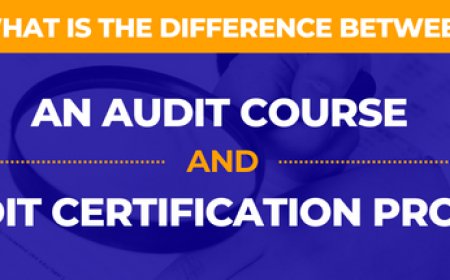RYT vs E-RYT – What’s the Difference?
If you’re exploring the world of yoga teaching certifications, you’ve likely come across terms like RYT and E-RYT.

If youre exploring the world of yoga teaching certifications, youve likely come across terms like RYT and E-RYT. While both signify that a yoga teacher has completed recognized training, they represent different levels of experience and qualification under the Yoga Alliance system.
Understanding the difference between RYT (Registered Yoga Teacher) and E-RYT (Experienced Registered Yoga Teacher) is essential if you're pursuing a career in yoga or choosing the right instructor for your own learning.
What is Yoga Alliance?
Before diving into the acronyms, its important to understand Yoga Alliance. It is a globally recognized nonprofit organization that establishes standards for yoga teacher training and credentials. It offers a registration system for yoga teachers and schools, ensuring consistency, quality, and safety in the teaching of yoga worldwide.
When you complete a Yoga Alliance-approved training, you can register with them to become an RYT at different levels depending on the hours and experience youve accumulated.
What is an RYT?
RYT stands for Registered Yoga Teacher. It is the basic credential you earn after completing a Yoga Alliance-approved teacher training program.
Common Types of RYT:
-
RYT 200: Completed a 200-hour yoga teacher training from a Yoga Alliance Registered Yoga School (RYS 200).
-
RYT 500: Completed a 500-hour training (either in one course or by combining a 200-hour and a 300-hour course) from Yoga Alliance-approved schools.
Requirements for Becoming an RYT:
-
Complete the required training hours (200 or 500) from a Yoga Alliance-registered school.
-
Submit your training certificate and pay a registration fee on the Yoga Alliance website.
-
Agree to uphold Yoga Alliances ethical standards and continuing education requirements.
What It Means:
An RYT is a teacher who is certified and recognized by Yoga Alliance as having completed formal training in yoga. It allows you to teach yoga professionally, join wellness centers, and be listed on the Yoga Alliance teacher directory.
What is an E-RYT?
E-RYT stands for Experienced Registered Yoga Teacher. This credential goes beyond formal trainingit recognizes teaching experience after completing a Yoga Alliance-approved course.
Types of E-RYT:
-
E-RYT 200:
-
Completed a 200-hour Yoga Alliance training.
-
Taught at least 1,000 hours of yoga after certification.
-
Accumulated at least two years of teaching experience.
-
-
E-RYT 500:
-
Completed a full 500-hour training (or a 200 + 300-hour pathway).
-
Taught at least 2,000 hours of yoga after certification.
-
Has four or more years of teaching experience since the initial training.
-

Enrol in 200 Hour Yoga Teacher Training in Rishikesh at Rishikul Yogshala Rishikesh: https://www.rishikulyogshalarishikesh.com/200-hour-yoga-teacher-training-rishikesh.php
What It Means:
An E-RYT has not only been trained but has also applied that training extensively in real-world teaching scenarios. It reflects maturity, depth, and dedication to the practice and teaching of yoga.
E-RYTs are often qualified to:
-
Lead their own teacher training programs.
-
Mentor new teachers.
-
Teach more advanced or specialized classes.
-
Be considered for senior teaching positions in studios or retreats.
Key Differences: RYT vs E-RYT
| Feature | RYT | E-RYT |
|---|---|---|
| Stands For | Registered Yoga Teacher | Experienced Registered Yoga Teacher |
| Training Requirement | Completed RYS 200 or RYS 500 | Completed RYS 200 or RYS 500 |
| Teaching Experience | Not required at registration | Minimum 1,000 to 2,000 hours required |
| Years of Teaching | 0 | 2+ years (E-RYT 200), 4+ years (E-RYT 500) |
| Eligible to Lead Teacher Training | No | Yes (when also affiliated with an RYS) |
| Recognized For | Completed formal education in yoga | Proven experience and depth in teaching |
Why Does This Matter for Yoga Teachers?
1. Career Advancement
Becoming an E-RYT can open doors to more professional opportunities such as:
-
Leading YTT (Yoga Teacher Training) programs.
-
Teaching in international retreats or festivals.
-
Taking on leadership or mentor roles in yoga schools.
2. Student Trust and Credibility
For students seeking experienced guidance, the E-RYT designation signals a teacher who has walked the path for years, taught hundreds (or thousands) of hours, and gained insight beyond the classroom.
3. Creating Your Own School
If you're planning to start your own Registered Yoga School (RYS), youll need to be an E-RYT 200 or E-RYT 500 to serve as the lead trainer. This ensures the school has an experienced foundation.
Why Does It Matter for Students?
As a student or aspiring yoga teacher, knowing whether your instructor is an RYT or E-RYT can help you make informed choices. While both are qualified, an E-RYT brings additional layers of practical wisdom, hands-on experience, and typically more advanced knowledge.
For beginners, an RYT 200 may be perfectly suited to teach foundational yoga. For those looking to go deeperinto philosophy, advanced alignment, or to pursue a career in yoga themselveslearning from an E-RYT can be invaluable.
Final Thoughts
Both RYT and E-RYT credentials play important roles in the yoga teaching world. An RYT designation gets you startedit confirms youve been trained and are ready to teach. The E-RYT designation is a mark of experience, dedication, and deeper knowledge gained through teaching and continued practice.
Whether youre a student seeking a mentor or a teacher planning your career path, understanding these designations will help you navigate the yoga world with clarity and confidence.































